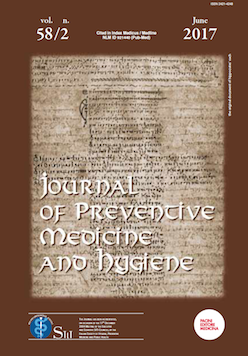Abstract
In last years, Campylobacter spp has become one of the most important foodborne pathogens even in high-income countries. Particularly, in Europe, Campylobacteriosis is, since 2005, the foodborne disease most frequently notified and the second in USA, preceded by the infection due to Salmonella spp. Campylobacter spp is a commensal microorganism of the gastrointestinal tract of many wild animals (birds such as ducks and gulls), farm animals (cattle and pigs) and companion animals (such as dogs and cats) and it is responsible for zoonoses. The transmission occurs via the fecal-oral route through ingestion of contaminated food and water. The disease varied from a watery diarrhea to a severe inflammatory diarrhea with abdominal pain and fever and can be burdened by some complications. The main recognized sequelae are Guillain-Barré Syndrome (GBS), the Reactive Arthritis (REA) and irritable bowel syndrome (IBS). Recently, many cases of Campylobacter spp isolated from human infections, showed an important resistance to various antibiotics such as tetracyclines and fluoroquinolones. For these reasons, the prevention of this infection plays an essential role. Many preventive measures exist to limit the transmission of the pathogens and the subsequent disease such as the health surveillance, the vaccination of the poultry and the correct food hygiene throughout the entire production chain. A global surveillance of Campylobacteriosis is desirable and should include data from all countries, including notifications of cases and the microbiological data typing of strains isolated from both human and animal cases.

